Using Consent Confirmation Emails
- Browser
- iPad
Users can send consent confirmation emails to HCPs when using double opt-in or when capturing consent using confirmation emails for any channel. Using consent confirmation emails allows users to capture consent for HCPs even when meeting remotely.
After an HCP selects the link from the confirmation email, they must select the confirmation button to confirm their consent. Opt-in consent is confirmed only after the HCP selects the button and the confirmation message displays.
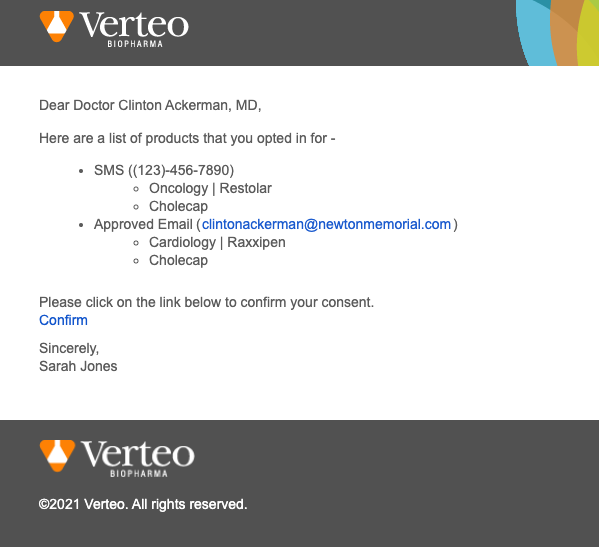
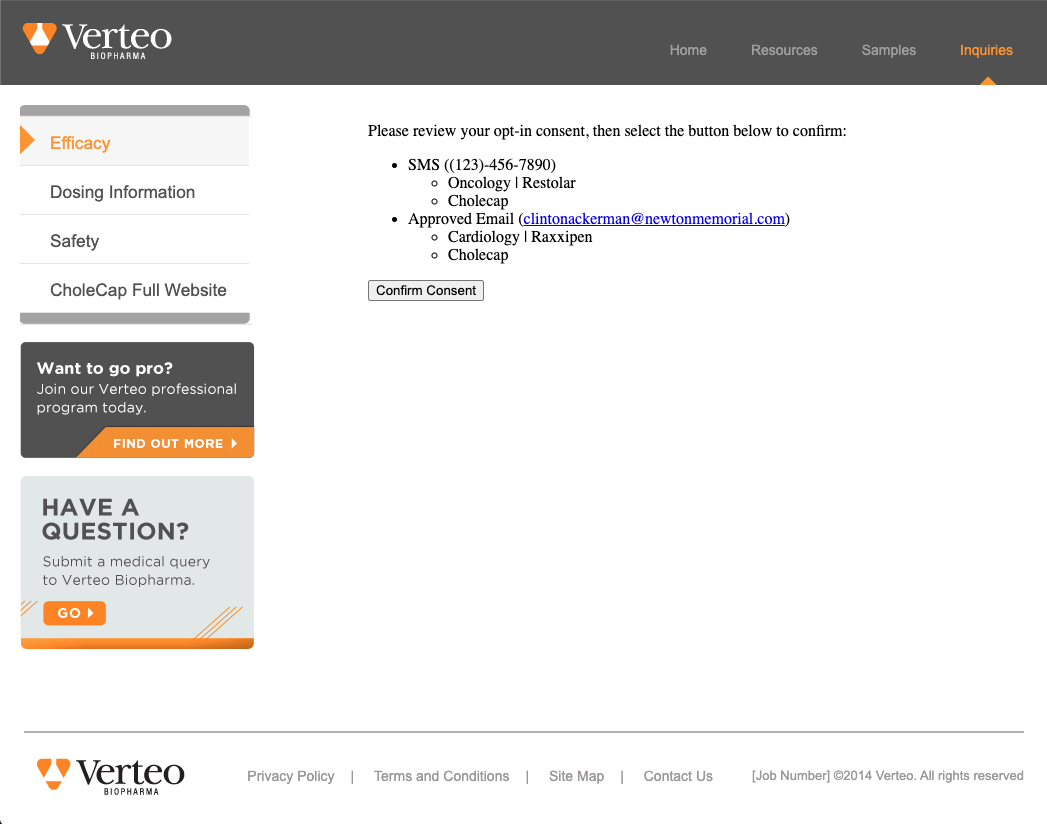
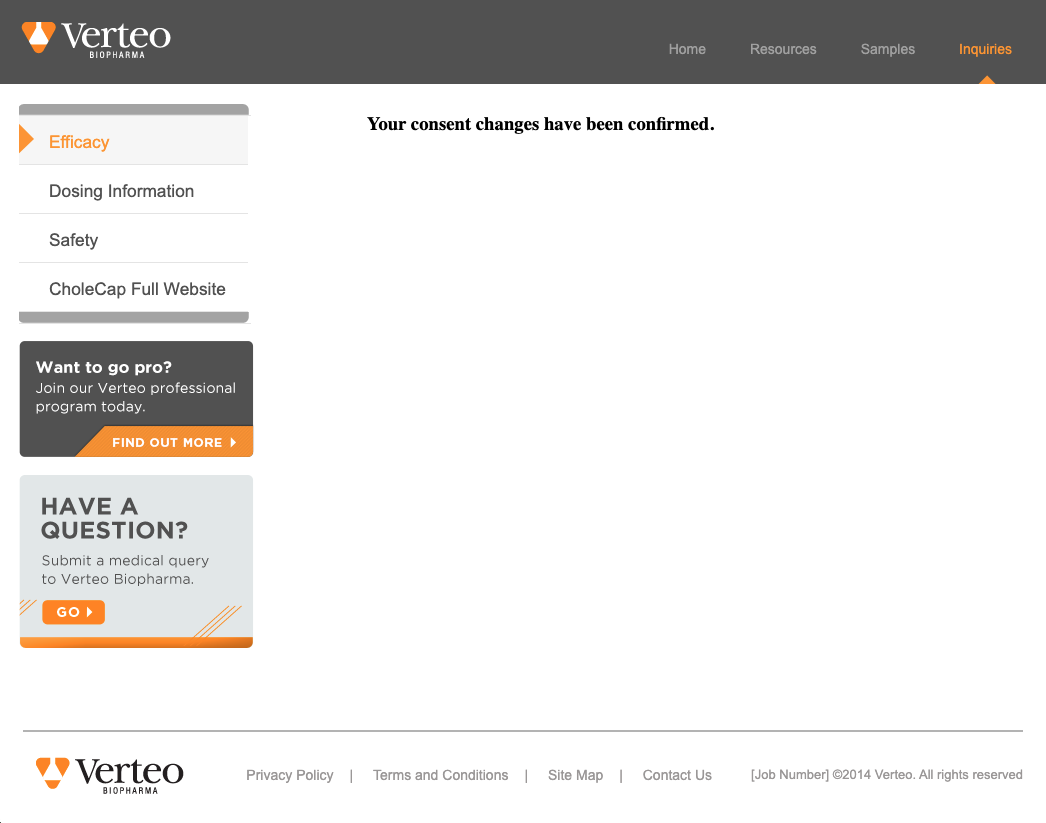
For example, Sarah Jones captures Dr. Clinton Ackerman’s consent for SMS and Approved Email communications during an Engage meeting. Dr. Ackerman receives an email with a confirmation link. He selects the link, which displays the list of his opt-in consent and a confirmation button. He reviews his consent and selects the button, displaying a confirmation message and opting him in to SMS and Approved Email communications.
Setting Up Consent Confirmation Emails
Admins can customize the email template of the confirmation email used for double opt-in and consent via confirmation email. The email contains the list of channels for which the HCP is opting in and a link which displays a confirmation message when selected.
To properly set up a consent confirmation email, admins must perform the following steps:
- Ensure one of the following features is configured:
- Define the confirmation message.
- Create the email content.
- Link the email template to the appropriate consent header.
Defining the Confirmation Message
Create a Multichannel_Message_vod record with the Double_Opt_In_vod record type to define the confirmation message. This record should contain information for at least the following fields:
- Name
- Message_Identifier_vod
- Consent_Confirm_HTML_vod – Defines the HTML for a confirmation step before confirming consent. This prevents the recipient’s systems from unintentionally confirming opt-in consent for an HCP. Include the following tokens:
- {{confirmConsent}} – Displays a confirmation button. Must use the following format:Copy
Confirmation button example
<form method="post">
<input type="submit" name="{{confirmConsent}}" value="Confirm Consent">
</form>Selecting this button redirects users to the confirmation message, which displays the content defined in the HTML_Message_vod field.
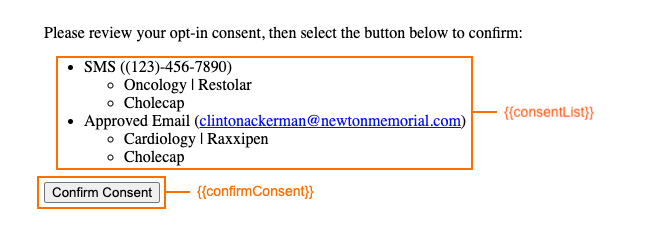
- {{consentList}} – Displays the list of consent types and lines to opt-in
- {{confirmConsent}} – Displays a confirmation button. Must use the following format:
- HTML_Message_vod – Defines the HTML for the confirmation message
Defining the Consent_Confirm_HTML_vod field is optional. If the field is empty, selecting the link in the email automatically opts the user in and redirects them to the page rendering the confirmation message defined in HTML_Message_vod.
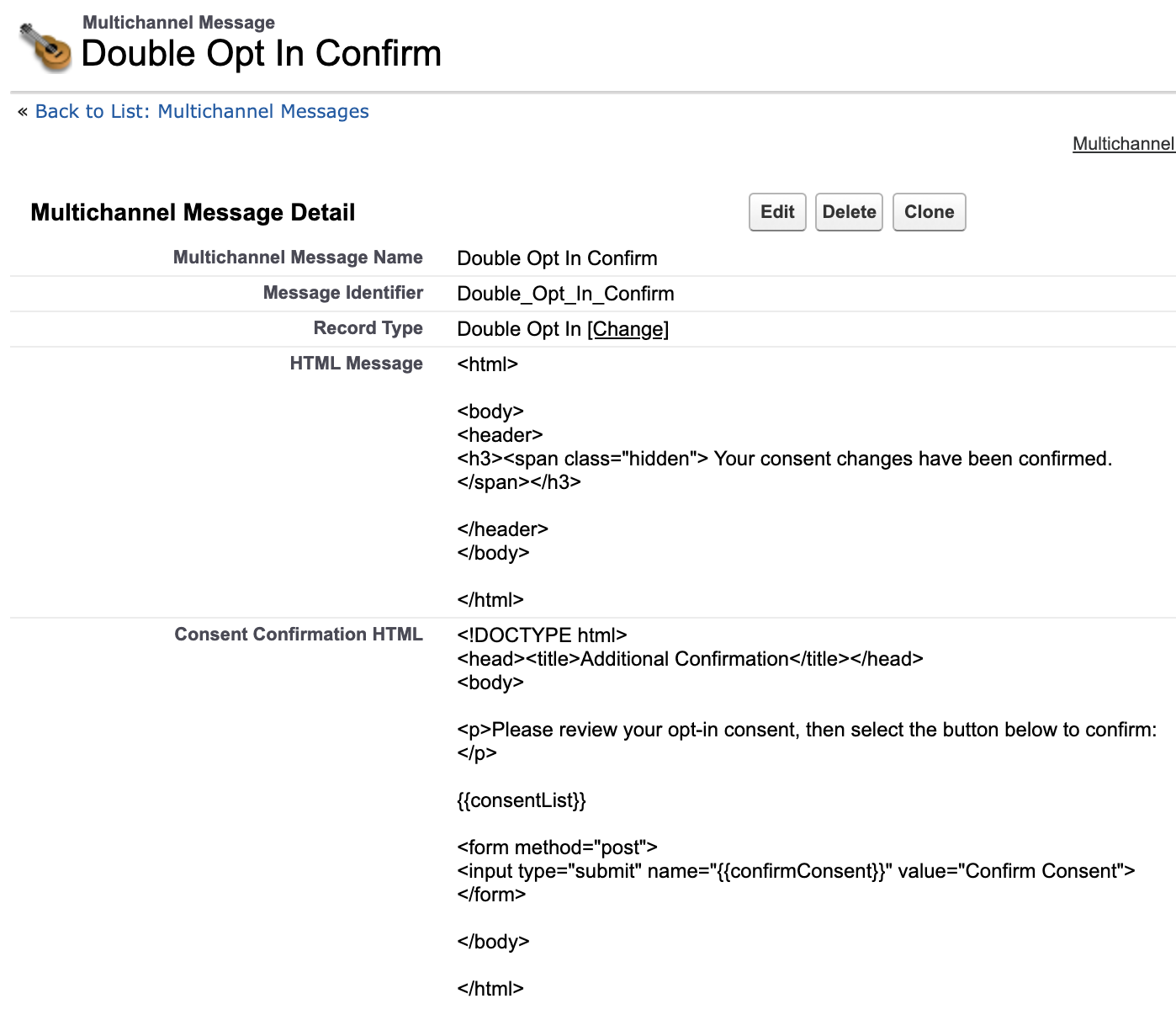
Creating the Email Content
Next, create an Email Template in Vault with the Email Receipt email template type. The HTML of the email template must reference the Message_Identifier_vod of the appropriate Multichannel_Message_vod record using the {{approvedEmailAction}} token. See Tracking Multichannel Activities from Approved Emails for more information about using the token. Admins can also use the {{insertConsentLines}} token to display all opted in consent lines and their consent types in the email. Syncing the email template to CRM creates an Approved_Document_vod record with the Email_Receipt_vod record type and the Email_HTML_vod field populated.
To host the additional confirmation step and the confirmation message in a custom landing page, admins can include a landing page URL in the {{approvedEmailAction}} token in the email template.
Linking the Email Template and Consent Header
Finally, create a Multichannel_Route_vod record with the appropriate record type to link the email template to the consent lines.
For double opt-in:
- Select the Double_Opt_In_Confirmation_vod record type.
- Enter the following information:
- Approved_Document_vod = Approved_Document_vod record for the confirmation email template
- Country_vod = Country_vod on appropriate Consent_Header_vod record
- Language_vod = Language_vod on appropriate Consent_Header_vod record
- Object_vod = Multichannel_Consent_vod__c
- Record_Type_Name_vod = RecordType API name of the appropriate Consent_Type_vod record
For capturing consent for all channels:
- Select the Consent_Confirmation_vod record type.
- Enter the following information:
- Approved_Document_vod = Approved_Document_vod record for the confirmation email template
- Country_vod = Country_vod on appropriate Consent_Header_vod record
- Language_vod = automatically populated with the Language_vod value from the Approved_Document_vod record
- Object_vod = Multichannel_Consent_vod__c
- Record_Type_Name_vod = Empty
Additionally, to define a Multichannel_Route_vod record to use when a Consent_Header_vod record does not have a Multichannel_Route_vod record with a matching Language_vod field, select the Default_vod check box.

Using the Appropriate Multichannel Route Record for Double Opt-In
The following logic determines which Multichannel_Route_vod record with the Double_Opt_In_Confirmation_vod record type is used:
- The Multichannel_Route_vod record matching the consent header’s language
- If one does not exist, the record matching the account’s language is used
- If one does not exist, the record matching the user’s language is used
- If one does not exist, the default record is used
Using the Appropriate Multichannel Route Record for Consent Using Confirmation Emails
If there are multiple Multichannel_Route_vod records with the Consent_Confirmation_vod record type for the same country, the following logic determines which record is used:
- The Multichannel_Route_vod record matching the consent header’s language
- If one does not exist, the record matching the account’s language is used
- If one does not exist, the record matching the user’s language is used
- If one does not exist, the default record is used
- If no default record is set, the first record returned is used
Admins can create sharing rules on the Multichannel_Route_vod object for orgs with end users in different countries using the same language. This allows users to sync only the records for their respective countries and prevents the selection of a record with the matching language but the incorrect country.



